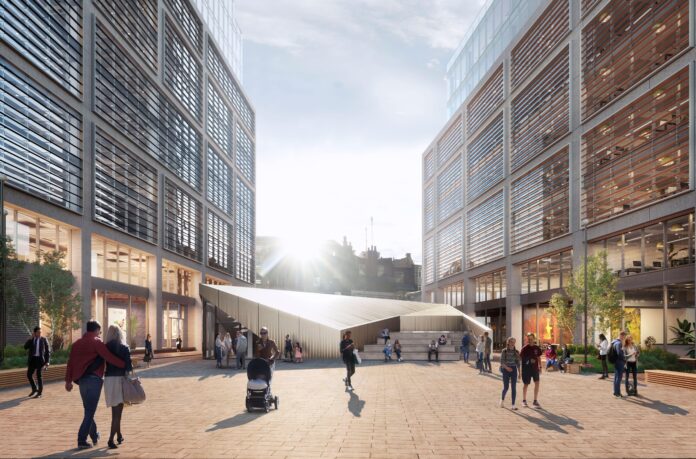Next year visitors will be able to stand three metres below the present street level of Shoreditch in East London and look down on a stage William Shakespeare knew intimately. The Curtain Playhouse, one of the earliest purpose-built theatres in London, was his original “wooden O”, as the famous preface to Henry V—first performed here—described it.
The Museum of Shakespeare is set to open within the archaeological remains of the Curtain Playhouse in spring 2024. It will explain the significance of the site and display finds including a bird whistle possibly used for sound effects, pottery money boxes—which had to be smashed to extricate the day’s box office receipts—as well as dropped buttons, clay pipes, pins, coins and nutshells from theatre snacks. Visitors will look down on the foundations of the stage and the gravelled yard where rowdy groundlings paid sixpence to stand.
The museum will open as part of the Stage, a new commercial development of flats, offices and retail, and promises a projected recreation of the original theatre and the “sights, smells and sounds” of Shakespeare’s London. Although aimed at a popular audience, the site is a scheduled ancient monument and the new attraction, designed by creative studio Bompas and Parr, is being developed in consultation with Historic England, the Museum of London Archaeology (MOLA) and experts on Shakespearian theatre.

The Curtain Playhouse excavation site Image: Courtesy of Museum of London Archaeology
The approximate location of the Curtain Playhouse was known, but the exact site was lost in the four centuries since it closed in the 1620s. When archaeologists from the MOLA uncovered it in excavations from 2011 to 2016, an old street plaque marking the best guess proved remarkably accurate. The Tudor entrance was through a tavern, probably exactly where a scruffy Victorian pub was later built. The pub’s yard and the back gardens of surrounding small houses and workshops had kept the site as open ground, with the stage area, yard and brick foundations of the tiered timber seating remarkably well preserved.
The Curtain, built in 1577, was only a few hundred yards from another theatre further along Curtain Road, imaginatively named the Theatre, whose foundations were discovered in 2008, also by the MOLA.
When Shakespeare’s theatre manager, James Burbage, fell out with the landlord of the Theatre, according to cherished stage legend the company dismantled the building under cover of darkness and shipped the timbers across the Thames to rise again as the much more famous Globe. Until the new theatre was ready in Southwark, for at least two years from 1597 the company leased the Curtain, where Henry V and, it is believed, Romeo and Juliet were first staged.
The famous image of a theatre as a “wooden O” comes from the prologue to Henry V: “Can this Cock-Pit hold within this Woodden O, the very Caskes that did affright the Ayre at Agincourt?” The Theatre and the Globe were indeed wooden Os, but part of the excitement of theatre historians over the Curtain was the revelation that it was actually a rectangular building with a long narrow stage, the earliest known example in London.

























